swarf


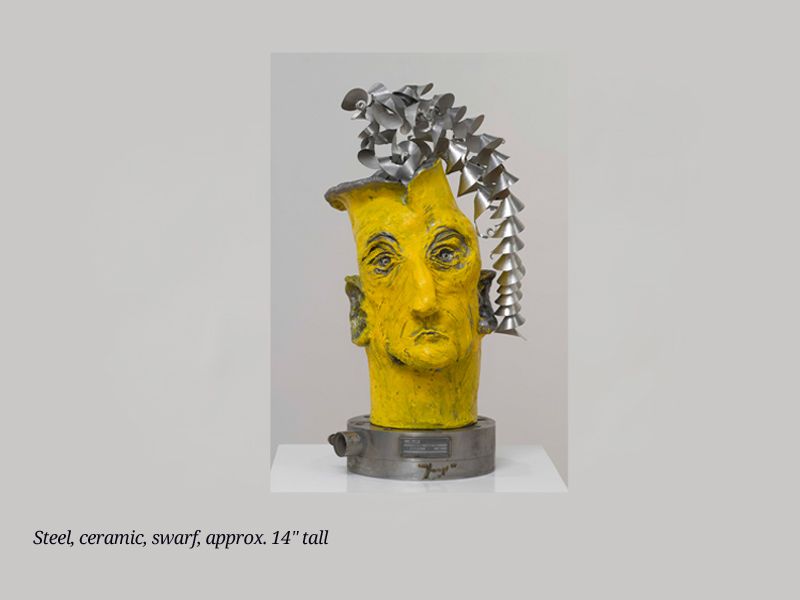
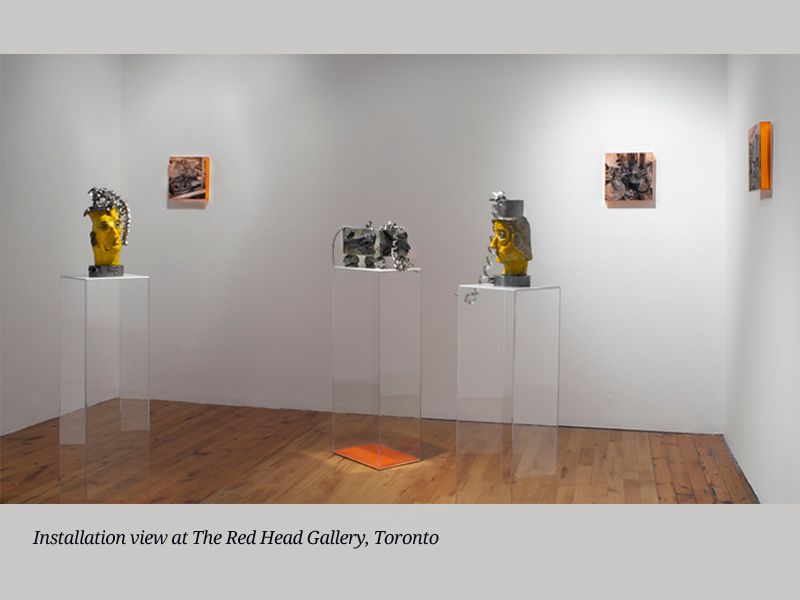
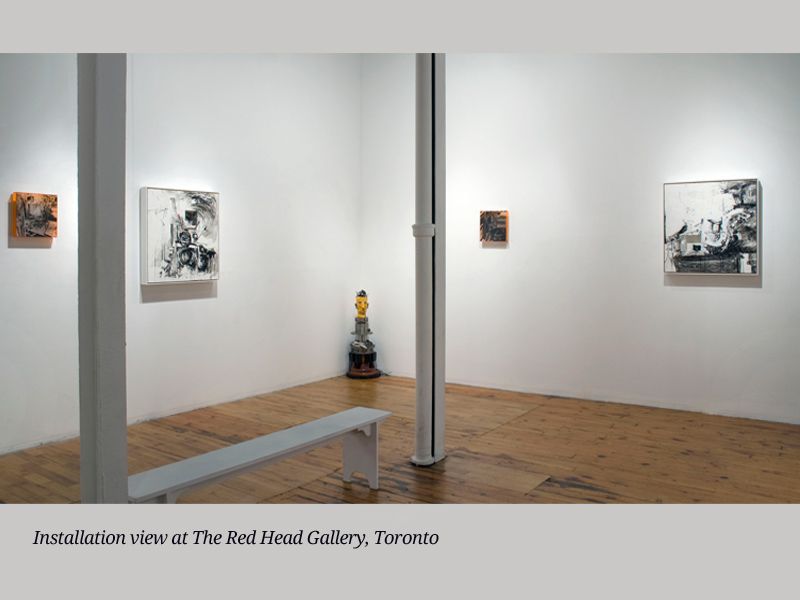
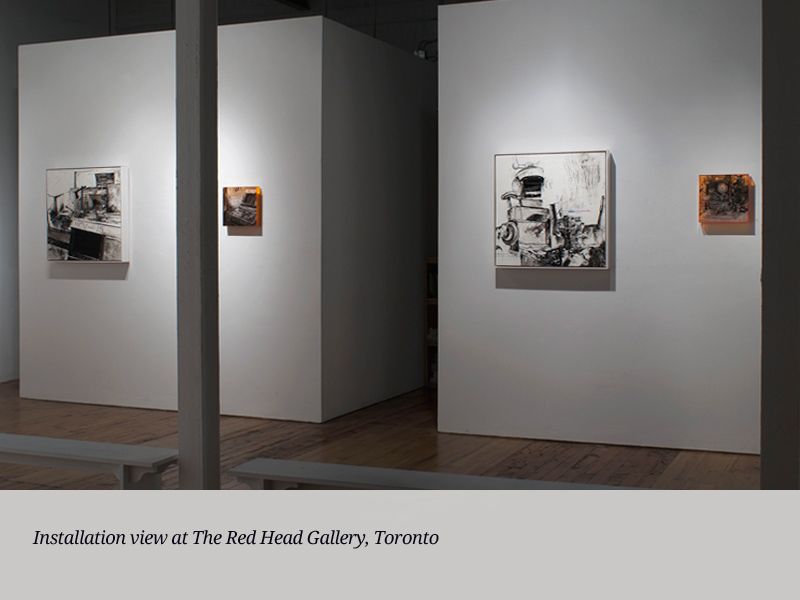
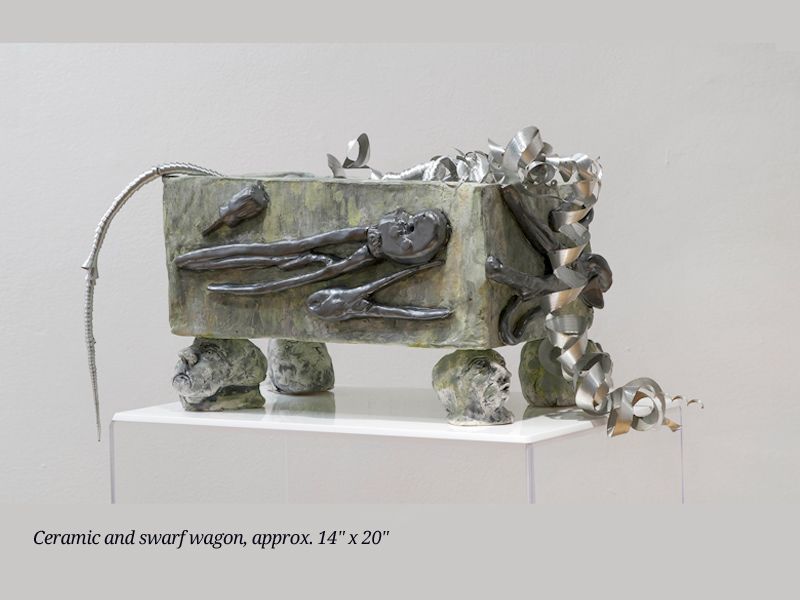




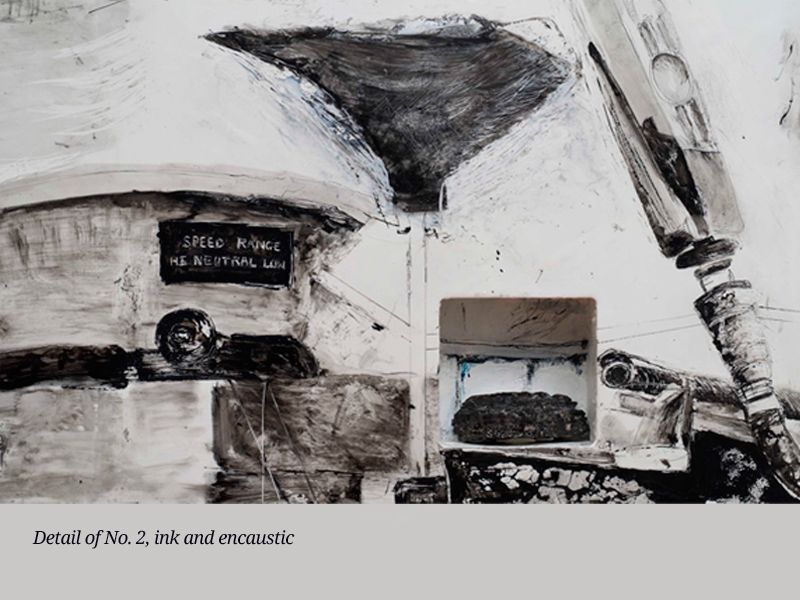




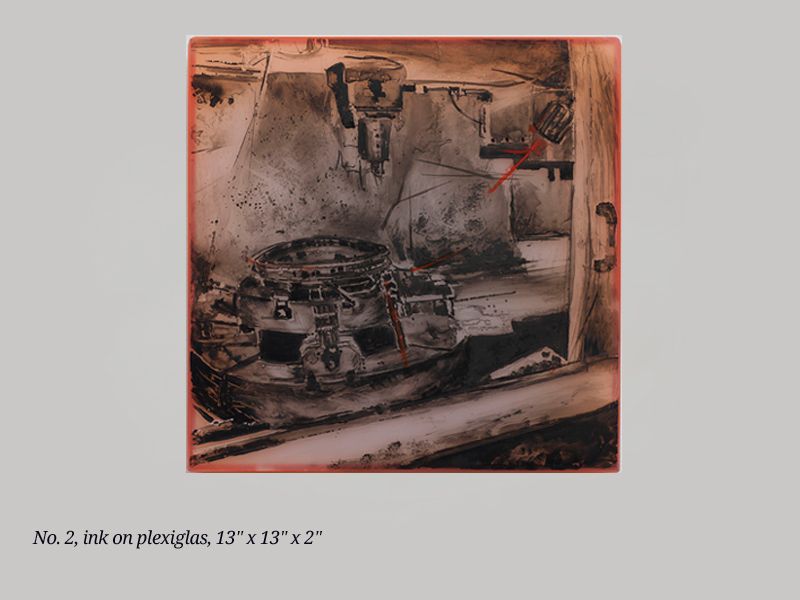



Text by Alan Sondheim
1. Machinery shudders, is shattered in Kelk's recent work; the six largest pieces contain box-like openings breaking through the surface, which are reminiscent of funerary niches. Three of the six are empty; the other three contain Pennsylvanian anthracite coal, a broken cup, and a charred pillar. The connotations are of a space potentially leading downwards, a false entrance into a pyramid, a grave, and the burial of the natural. Odd that the machinic doesn't pull the pieces into a Charles Sheeler-sheen; instead, the clarity of engineering is subverted by an expressionism that insists on the blurring of boundaries between body and machine, hand- gesture and machine-shop. The latter is brought home as well in the two large sculptured heads with swarf (machine tailings); the swarf itself is expressive and organic - the result of peelings from presumably finished, hardened parts.
2. Swarf. From The Collaborative International Dictionary of English v.0.48 [gcide]:
Swarf \Swarf\, v. i. [Cf. {Swerve}.] To grow languid; to faint. [Scot.] "To swarf for very hunger." --Sir W. Scott. [1913 Webster]
From The Collaborative International Dictionary of English v.0.48 [gcide]:
Swarf \Swarf\, n. [Cf. {Swerve}.] The grit worn away from grindstones in grinding cutlery wet. [Prov. Eng.] [1913 Webster]
Think of languid grit, think of fainting among the machinic, the body chewed up, dispersed. The guardian heads rest on load cells, which are also visible in some of the other work -
"A Load Cell is a transducer that is used to convert a force into electrical signal." (from the Wikipedia article). A brain may convert an electrical signal into a movement or moment of the body, a rerun of electrical energy into the gesture of a brush or the tooling of encaustic. A horizontal cell must have a bias - the weight of the upper section of the cell - just as a scale has to deduct the weight of its platform. Combine cells or scales, the lower weighing the upper, a measurement of gravitational force among other things. Think of this distributed weight as a narrowing or harrowing of the marrow of human life, life forced into the interstices of the world, much as micro-organisms have been discovered to inhabit rock-strata within the earth and beneath the sea-bed. Larger and more complex structures disappear, but then the human body carries 1 to 5 kilos of micro-organisms itself. Again, Wikipedia: "Bacterial cells are much smaller than human cells, and there are at least ten times as many bacteria as human cells in the body (approximately 10x14 versus 10x13)."
3. Think of the body, then, as not-so-primordial ooze; what dies is the overall constitution of the body as an integral whole, while everything else transforms, decays, devolves, travels elsewhere. Rigid structures - Wilhelm Reich's character armor as literal embodiment - are uncanny and abject illusions, no matter how strong the body and mind appear to be. Kelk's work plays, plies, through these illusions; what remains are gestures, the result of macro- and micro-behaviors as residues, as tombs or graves, those funerary niches, which, on closer inspection, are empty or emptying, as the world proceeds along its darker paths.
4. Notes and annotations.
There are no hard, rigid forms in the drawings; machines appear organic, reminiscent of melting or deflating soft sculpture. This appearance wanders between content and expressionist style - the latter for example tends 'anyway' towards a kind of biological messiness, but it's clear that the messiness is inherent in the content itself. This isn't a Luddite vision but a transformative one.
Guardian figures: ceramic heads on plinths. Guardian figures are found in many cultures, from sphinx through Shinto foxes. These heads, both and neither machinic and organic, appear to structure the installation.
Relating to the encaustics: Mexican niches boxes.
Both wax and plastic surfaces are smooth 'at their creation,' but are subsequently scarred and incised; these marks and demarcations construct content out of substance, inscription out of empty field. Unlike, for example, a pencil drawing, the marks are embedded; they become part of the field itself.
Scattered loadcells on the floor: scatter pieces, themselves creating a field within and through the architecture of the gallery.
"Organ machines" - as if the machinery were not only 'soft,' but operated as such, as biological organ machines, production machines for the future.
[widgetkit id="122" name="swarf"]